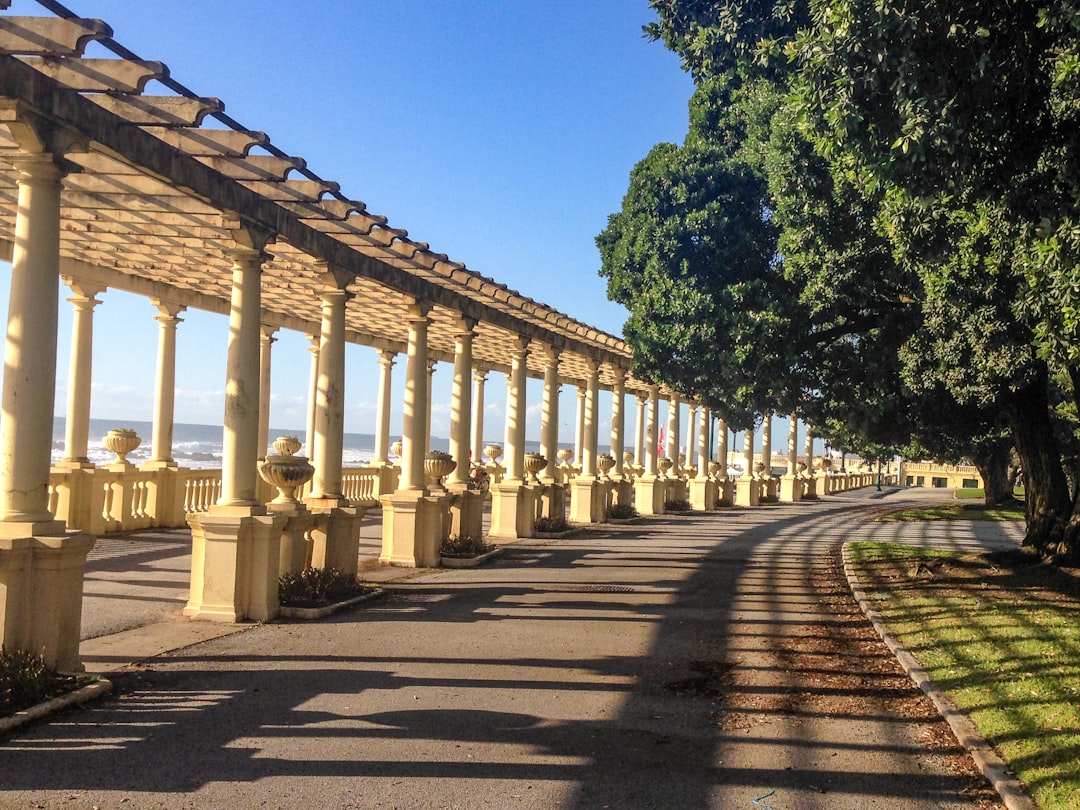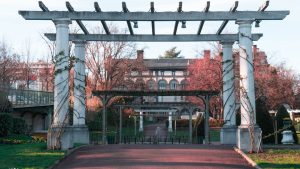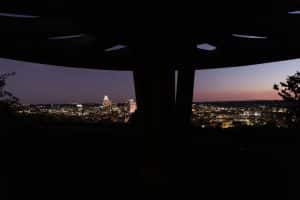Building codes and regulations are a set of guidelines and standards that govern the construction and installation of structures, including pergolas. These codes and regulations are put in place to ensure the safety, structural integrity, and quality of buildings. When it comes to pergola installation, it is important to understand and follow these codes and regulations to ensure a safe and compliant structure.
Key Takeaways
- Building codes and regulations are important for ensuring safe and compliant pergola installation.
- Savannah Pergola Company plays a crucial role in complying with building codes and regulations.
- Types of building codes and regulations for pergola installation include zoning, building, electrical, and fire codes.
- Building codes and regulations cover materials, design, location, placement, size, height, and safety features of pergolas.
- Obtaining permits and inspections is necessary for complying with building codes and regulations and ensuring a successful pergola installation.
Understanding the Importance of Building Codes and Regulations
Following building codes and regulations for pergola installation is crucial for several reasons. First and foremost, it ensures the safety of homeowners and their property. Building codes are designed to minimize the risk of accidents, such as collapses or fires, that can cause harm to individuals or damage to property.
In addition to safety concerns, failing to comply with building codes and regulations can result in legal and financial consequences. Non-compliance can lead to fines, penalties, or even legal action. It can also affect insurance coverage, as many insurance companies require structures to be built in accordance with local building codes.
Furthermore, building codes and regulations help maintain quality and standards in construction. By following these guidelines, homeowners can be assured that their pergola is built to withstand the elements and will last for years to come.
The Role of Savannah Pergola Company in Building Codes and Regulations Compliance
At Savannah Pergola Company, we understand the importance of following building codes and regulations for pergola installation. We are committed to ensuring the safety and satisfaction of our customers by adhering to these guidelines.
Our team has extensive expertise in navigating local building codes and regulations. We stay up-to-date with any changes or updates to ensure that our pergolas meet all necessary requirements. We work closely with homeowners to obtain any necessary permits and schedule required inspections.
Types of Building Codes and Regulations for Pergola Installation
There are several types of building codes and regulations that apply to pergola installation. The International Building Code (IBC) and the National Building Code (NBC) are two widely recognized codes that provide guidelines for construction practices. These codes set standards for structural design, materials, and safety features.
In addition to these national codes, there are also local building codes and regulations that vary by jurisdiction. These codes may include specific requirements for setbacks, clearances, and other factors that are unique to the local area.
Building Codes and Regulations for Pergola Materials and Design
Building codes and regulations dictate the requirements for materials used in pergola construction. These codes specify the types of materials that are suitable for outdoor structures, taking into consideration factors such as durability, resistance to weathering, and fire resistance.
Design standards are also outlined in building codes and regulations. These standards ensure that the structure is designed to withstand the expected loads and forces, such as wind or snow. They may include requirements for structural elements such as beams, columns, and connections.
Building Codes and Regulations for Pergola Location and Placement
Building codes and regulations also address the location and placement of pergolas. Setbacks and clearances from property lines and other structures are often specified to ensure that the structure does not encroach on neighboring properties or pose a risk to existing structures.
Requirements for anchoring and stability are also outlined in building codes. Pergolas must be securely anchored to prevent movement or collapse during high winds or other extreme weather conditions.
Building Codes and Regulations for Pergola Size and Height
Building codes and regulations typically specify the maximum allowable size and height for pergolas. These limitations are in place to ensure that the structure does not overwhelm the property or create a visual obstruction.
In addition to size limitations, building codes may also require additional structural support for larger or taller pergolas. This may include additional beams, columns, or bracing to ensure the stability and safety of the structure.
Building Codes and Regulations for Pergola Safety Features
Building codes and regulations also address the requirements for safety features on pergolas. These may include requirements for railings or guards to prevent falls, especially if the pergola is elevated or located near a drop-off.
Fire safety codes may also apply to pergolas, especially if they are located close to a dwelling or other structures. These codes may require the use of fire-resistant materials or the installation of fire suppression systems.
Building Codes and Regulations for Pergola Permits and Inspections
Obtaining necessary permits is an important step in ensuring compliance with building codes and regulations for pergola installation. Permits are typically required before construction can begin and are issued by the local building department.
Once construction is complete, inspections are often required to ensure that the pergola has been built in accordance with the approved plans and meets all necessary requirements. Inspections may include checks for structural integrity, proper anchoring, and compliance with safety features.
Why Building Codes and Regulations Matter for Pergola Installation
In conclusion, building codes and regulations play a crucial role in the installation of pergolas. Following these guidelines ensures the safety of homeowners and their property, helps avoid legal and financial consequences, and maintains quality and standards in construction.
When choosing a company for your pergola installation, it is important to partner with a reputable company that prioritizes compliance with building codes and regulations. Savannah Pergola Company is committed to following these guidelines and has the expertise to navigate local building codes and regulations. We will assist you in obtaining necessary permits and ensure that your pergola meets all necessary requirements for a safe and compliant structure.
If you’re planning to install a pergola in your backyard, it’s important to be aware of the building codes and regulations that may apply. These guidelines ensure that your pergola is safe and structurally sound. To learn more about the materials you can use for your pergola, check out this informative article on Savannah Pergola’s website: https://savannahpergola.com/materials/. It provides valuable insights into different materials such as wood, vinyl, and aluminum, helping you make an informed decision for your pergola project.




